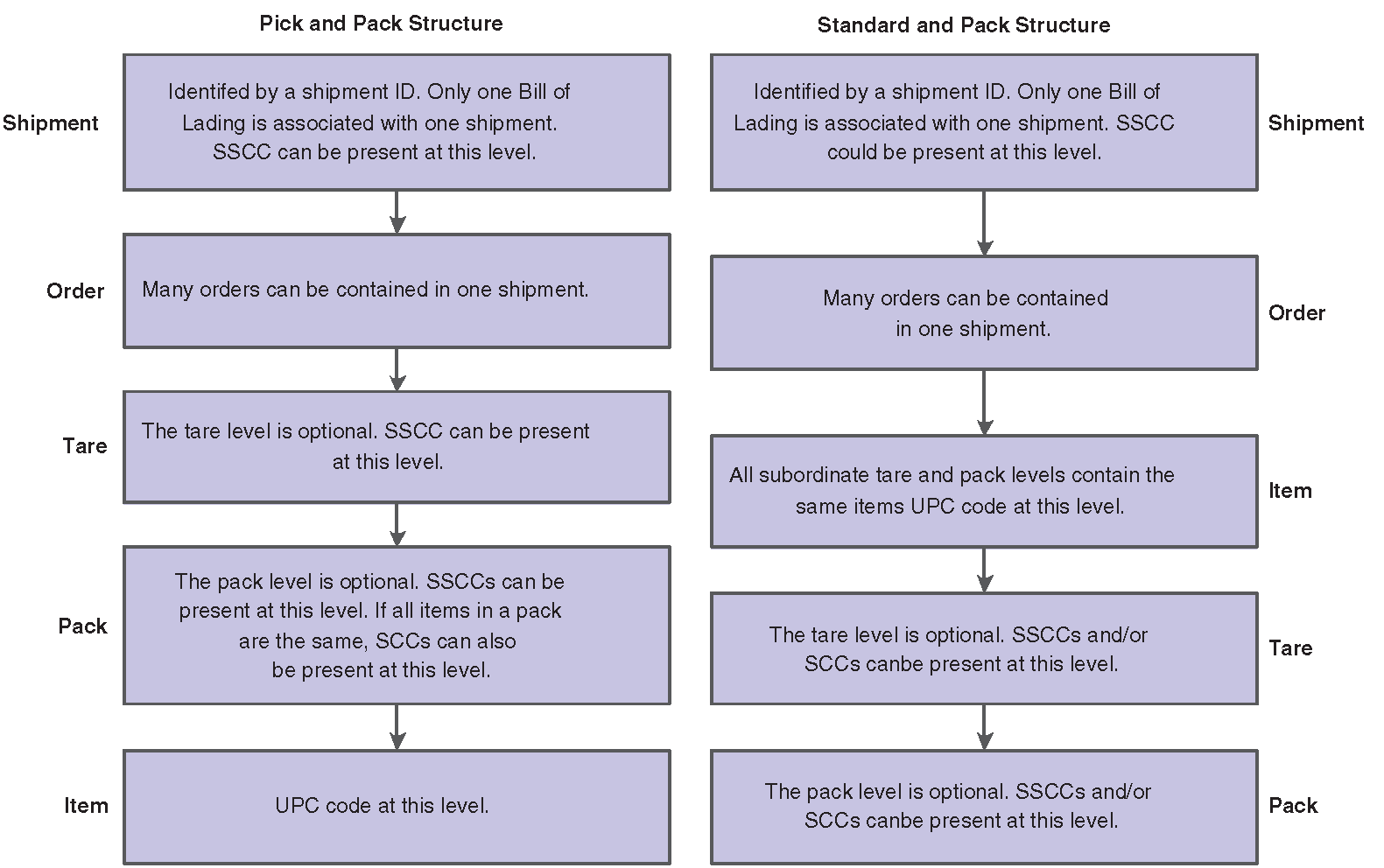Hierarchical Configurations for Customer Information
When you transmit order information, you can establish a format that relays the information about the shipment, the orders within the shipment, and the items within the order. You define hierarchical configurations to transmit information that meets customers' needs.
You can set up any structure based on the needs of the business. These are examples of hierarchical structures:
Structure |
Usage |
|---|---|
Pick and Pack |
This is the most flexible configuration because you can combine products at the tare and pack levels. |
Standard Carton Pack |
Within this configuration, there can only be one UPC present in subordinate tare and pack levels. |
Within the configurations, you can define hierarchies based on the customer preferences. These are examples of configuration levels:
Level |
Usage |
|---|---|
Shipment (S) |
There can only be one Shipment level in each transaction set that is transmitted. This contains information such as the bill of lading number, ship to, and sold from information. |
Order (O) |
The order level contains information related to the supplier's sales order and the customer's purchase order. |
Tare (T) |
The optional tare level contains information related to pallets and other large product collections. |
Pack (P) |
The optional pack level contains information related to intermediate packs. |
Item (I) |
The item level contains information about the product that is shipped, such as UPC number and quantity. |
One customer may need shipment, order, item information, in that order, while another may prefer shipment, order, tare, pack, item information, in that order. You define hierarchical configurations to transmit information that meet customer's needs.
This diagram illustrates the hierarchical configurations for pick and pack structures:
